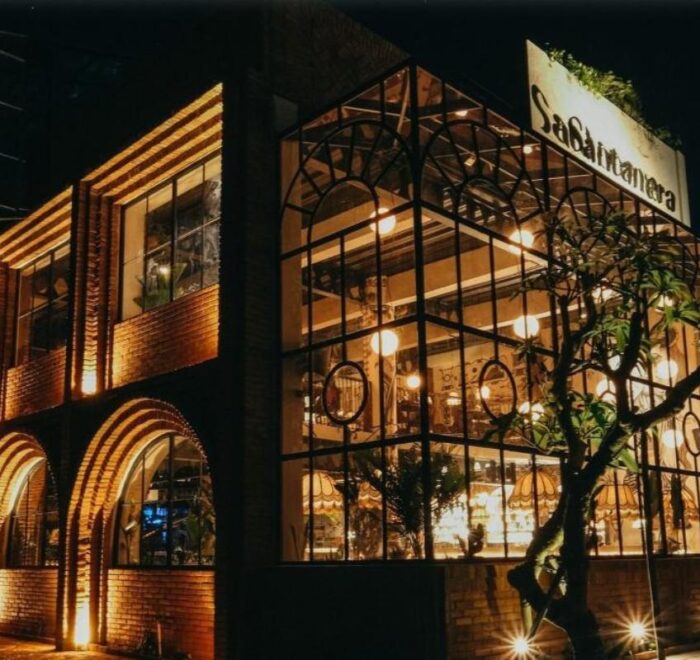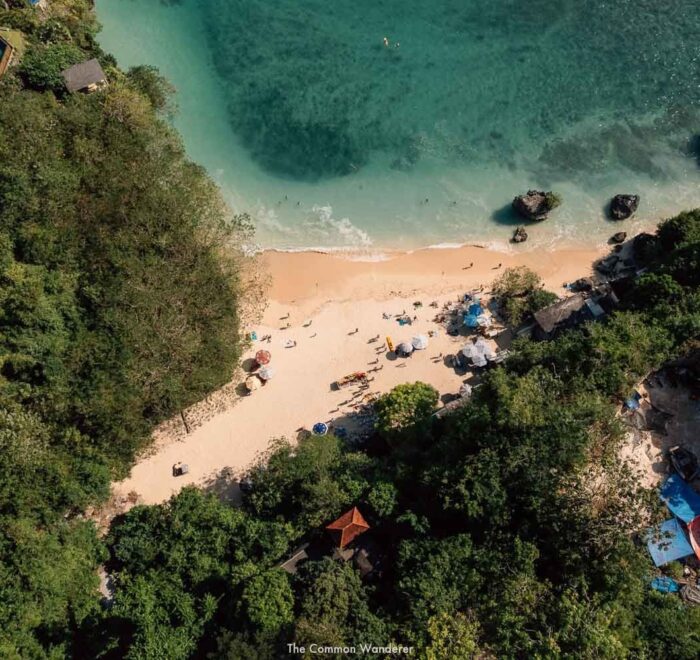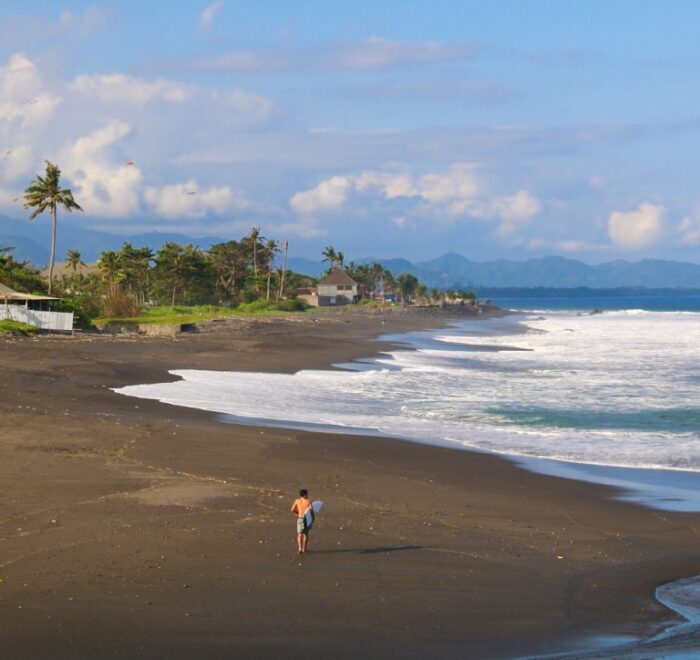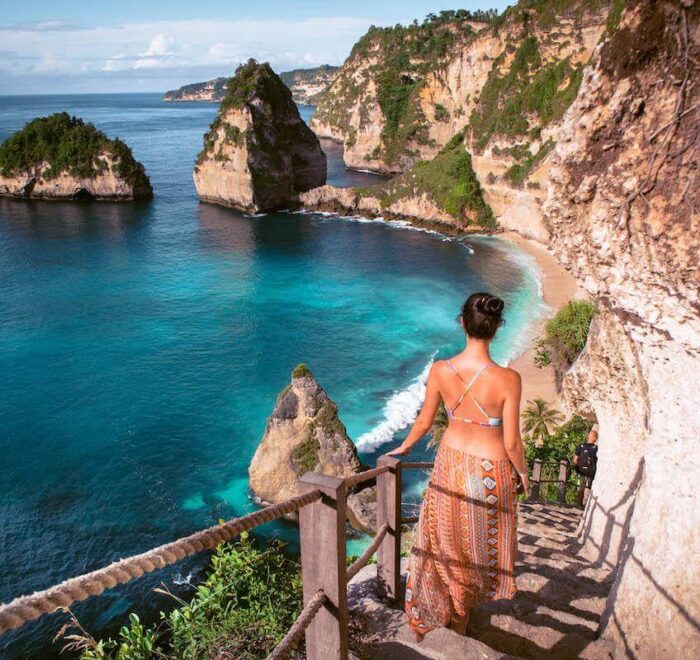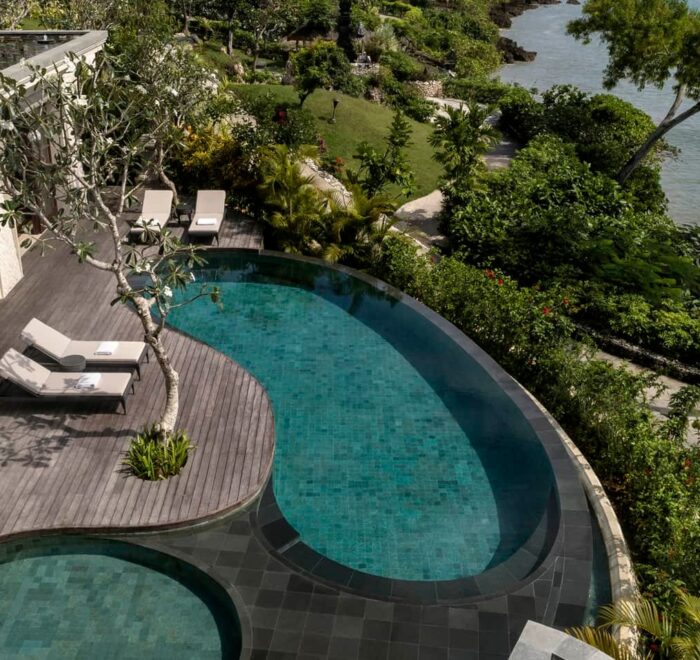Mount Agung, Bali’s highest and most sacred and active volcano, stands at 3,142 meters. It’s not just a challenging hike but also a journey through Balinese culture and spirituality. This guide covers everything from the best hiking routes to essential preparation tips, ensuring you make the most of your adventure to climb Mount Agung.
Key Takeaways
Mount Agung holds significant cultural and spiritual importance for the Balinese people, serving as a centre of rituals and ceremonies, with the revered Pura Besakih temple nearby.
Two main routes to Mount Agung’s summit cater to different fitness levels: the easier Pura Pasar Agung route and the challenging Pura Besakih trail, with guides highly recommended for safety.
Proper preparation to climb Mount Agung includes physical conditioning, appropriate gear, and awareness of current volcanic activity and weather conditions to ensure a safe and enjoyable climb.
Understanding Mount Agung

Source: hikingtheworld.blog/
Mount Agung, also known as Gunung Agung (Indonesian for ‘Great Mountain‘) or the Mount Agung Volcano, is the highest point and most sacred peak in Bali, standing at 3,142 metres (10,308 feet) above sea level. More than just a hiking destination, it holds deep cultural and spiritual significance, regarded as the dwelling place of the gods by the Balinese people.
As the heart of Balinese Hinduism, Mount Agung plays a central role in rituals and ceremonies. The revered Pura Besakih, known as Bali’s Mother Temple, sits on its slopes and is a key site for religious processions. During sacred festivals, lava surface formations and crater walls near the temple serve as symbolic connections between the earthly and divine.
Beyond its religious importance, Mount Agung is an active volcano with a history of previous eruptions, including the devastating 1963 eruption that reshaped the landscape and affected nearby villages. The eruption began in February 1963 with ash emissions and steam clouds rising from the crater rim. By March, the Mount Agung Volcano’s eruption intensified with lava effusion and pyroclastic flows, causing destruction in nearby villages. The eruption began again in May, triggering explosive activity, widespread lahar deposits, and continued seismic activity.
More recently, scientists have monitored Gunung Agung’s volcanic activity using seismic data, satellite imagery, and reports of ash emissions. These tools track growing thermal anomalies, crater floor changes, and potential geological hazards, ensuring safety for both local residents and climbers.
For hikers, the journey to Gunung Agung’s summit crater is both a physical and spiritual experience. Whether trekking via the Pura Pasar Agung route or the Pura Besakih route, climbers navigate rugged terrain shaped by andesite lava flows and thermal anomalies. The breathtaking view from the absolute summit offers an unparalleled perspective of Bali, Indonesia, with sights of Mount Batur and beyond.
Understanding Gunung Agung’s seismic activity and cultural heritage adds depth to your adventure. Whether you’re scaling the crater rim or witnessing the thin white plume of steam rising from its depths, every step of climbing the Great Mountain is a journey through Bali’s natural and spiritual legacy.
Routes to the Summit of Mount Agung

Source: hikingtheworld.blog/
Mount Agung’s summit can be reached via two primary paths: the Pura Besakih route and the Pura Pasar Agung route. Each trail presents a unique experience and set of challenges, suitable for various fitness levels and adventure preferences.
The Pura Pasar Agung trail is the more popular and manageable route to climb Mount Agung. Starting at 1,700 metres above sea level and ending at the crater rim (2,866 metres above sea level). The ascent takes about 4-5 hours, it offers a shorter, less strenuous climb through lush forests and rocky terrain. With 20-30 hikers per night, it’s a lively route ideal for those seeking a manageable yet rewarding ascent with breathtaking views.
On the other hand, the Pura Besakih trail is a more challenging route, suited for adventurous and physically fit climbers. It begins at Pura Pengubengan (1,200 metres above sea level) and ascends to Mount Agung’s absolute summit (3,142 metres). With steep, muddy terrain, it requires high fitness and endurance, taking 6-8 hours to complete. Less crowded than the Pura Pasar Agung route, it offers a tougher yet more solitary and rewarding climb.
Reaching Gunung Agung’s summit is a true test of endurance, no matter your route. The final push, especially via Pura Besakih, requires navigating steep, rocky terrain with hands-on climbing. Yet, the breathtaking sunrise over Bali, Indonesia makes every step worthwhile.
As you plan your hike, consider your fitness level and hiking experience. Choose a route that matches your fitness level, as both offer unique challenges and rewards. Hiring a guide is highly recommended for safety and a deeper understanding of the mountain’s cultural significance.
The Importance of Hiring a Guide for Mount Agung

Source: anshul.art/
Hiring a guide for your Mount Agung hike is a crucial safety measure, especially for less experienced climbers. The steep, challenging terrain has led to fatal accidents for those without guidance. A guide helps navigate risks, provides essential support, and can handle emergencies, ensuring a safer and more secure climb.
Guides are also invaluable in navigating the unmarked paths, particularly after the treeline, where the trail can become confusing and difficult to follow. Their local knowledge ensures that you stay on the correct path and avoid hazardous areas of Mount Agung. Some benefits of hiring a guide include:
Essential support and advice during the climb.
Emergency assistance in case of injury or sudden changes in weather conditions.
Navigating unmarked paths and avoiding hazardous areas.
Local knowledge to ensure you stay on the correct path.
A guide’s key role is decision-making, assessing the group’s condition to determine whether to proceed or turn back. This is vital for ensuring the safety of all participants, as the Climb Mount Agung journey becomes increasingly challenging.They also offer cultural insights, deepening your understanding of Mount Agung’s significance and Balinese traditions.
For those unfamiliar with the terrain or lacking mountain climbing experience, hiring a guide is not just advisable but essential to climb Mount Agung. The guides’ expertise and experience can make a significant difference in your safety and overall experience.
Arrange a local guide to ensure a safe and enriching hike. This investment lets you focus on the journey, breathtaking views, and respectfully honouring the mountain’s cultural significance.
Preparing for Your Mount Agung Hike

Source: wiranurmansyah.com/
Ascending Mount Agung is an intense adventure demanding preparation, both physical and mental. With challenging terrain and long trekking hours, a moderate to high fitness level is essential. Hikers should be in good shape and accustomed to climbing steep trails.
A great way to test your endurance is by doing the Mount Batur Sunrise Hike, a less strenuous but still challenging option. This preparatory hike helps gauge your readiness for climbing Mount Agung, reducing the risk of exhaustion or injury and ensuring a safer, more enjoyable ascent.
Packing the right gear is crucial for a successful climb. Essential items include:
Sturdy hiking boots with good traction, as the terrain can be uneven and slippery.
Layered clothing to adjust to the changing temperatures, with a down jacket for the cold summit conditions and lighter layers for the warmer daytime temperatures.
A windbreaker or rain jacket to protect against strong winds and potential rain at higher altitudes.
Staying hydrated and energised is essential for climbing Mount Agung. Carry plenty of water and high-energy snacks like energy bars, fruit, and trail mix to maintain stamina. A small backpack with a waist belt helps distribute weight, while a headlamp is crucial for the overnight hike.
Proper preparation ensures a safer, more enjoyable ascent, allowing you to focus on the journey, breathtaking views, and the cultural significance of Mount Agung.
What to Expect During the Climb

Source: hikingtheworld.blog/
The ascent of Gunung Agung traverses varied terrains, each posing its own set of challenges and rewards. The Mount Agung trek can be divided into three main sections: tropical forest, evergreen forest, and rocky terrain.
The hike begins in the tropical forest, where the terrain is relatively gentle. Lush scenery, rustling leaves, and glimpses of wildlife create a serene atmosphere. This section offers a smooth introduction before the climb becomes more intense.
As you ascend Mount Agung volcano, the evergreen forest brings cooler air and denser vegetation. The incline becomes steeper, requiring more effort to navigate. Despite the challenge, the peaceful surroundings make this section enjoyable.
The final stretch of Mount Agung volcano is the toughest, with steep, rocky terrain requiring physical strength and endurance. You may need to use your hands for support, and trekking poles can provide stability. Careful footing is essential, as the ground can be slippery and uneven.
The entire hike covers 7 kilometres and takes 6 to 7 hours to complete. It is a true test of resilience, pushing both body and mind. However, reaching the summit of Mount Agung is an unforgettable experience, with breathtaking views and a deep sense of accomplishment.
Safety Considerations for Mount Agung

Source: hikingtheworld.blog/
Safety is paramount when climbing Mount Agung, as this active volcano presents risks like sudden weather changes and seismic activity. Before hiking, check the latest alert levels to ensure the mountain is safe. Authorities monitor volcanic activity, and access may be restricted if eruption risks increase.
The climb of Mount Agung volcano is physically demanding, especially the final 45-degree ascent, which is strenuous even for experienced hikers. Proper fitness assessment is crucial before attempting the trek. Those without mountain experience or in poor physical condition are advised not to climb.
Rain and adverse weather conditions can make the climb more challenging and dangerous. Some important things to keep in mind when climbing in these conditions are:
Torrential rain can create slippery surfaces and increase the difficulty of reaching the highest point.
It is important to be prepared for these conditions and to follow the guide’s instructions closely.
Guides have the authority to halt the ascent if weather conditions worsen or if there is any danger to the group.
Straying from the path can be life-threatening, especially near the crater rim and cliffs. If you feel unwell, inform your guide immediately to prevent serious health issues. A safe hike requires caution, awareness, and respect for the mountain’s challenges.
To ensure a safe and enjoyable hike, always follow these guidelines:
Follow the designated route and the instructions of your guide.
Avoid running, overtaking, or pushing other participants during the ascent.
Safety is a collective responsibility, so respect these considerations to ensure that everyone has a positive and memorable experience on Mount Agung.
Experiencing the Sunrise at Mount Agung

Source: Mario von Rotz on Unsplash
Experiencing the sunrise from the highest point in Bali is one of the most enchanting moments of the Mount Agung climb. To catch this breathtaking view, hikers typically set out in the middle of the night, ensuring they reach the top just as the first light of dawn breaks. The anticipation builds with every step, and the reward is a spectacular sight that makes the challenging climb worthwhile.
At sunrise, the summit of Agung volcano offers an unparalleled view, making it a unique highlight of the trek. The skies begin to lighten, casting a golden hue over the landscape. The panoramic view includes the entire island of Bali, Indonesia spread out below, the caldera of Mount Batur with its lava surface, and the shining lake, all bathed in the soft glow of the morning sun. The clouds swirl around the peak, adding to the ethereal beauty of the moment.
Photographers will find endless opportunities to capture the changing colours, mountain shadows, and serene morning stillness. Beyond the visuals, the sunrise brings a deep sense of accomplishment and connection to nature.
The experience of watching the sunrise from Mount Agung offers:
Visual observations of the world waking up below you.
A profound sense of accomplishment and connection to nature.
A moment of reflection and gratitude.
A reward for the physical and mental effort invested in the climb.
It’s not just about the visual observations; it’s a deeply emotional and spiritual moment.
To fully enjoy this moment, be well-prepared for the cold temperatures at the summit. Dress in layers, bring a headlamp for the dark ascent and carry enough water and snacks to maintain your energy. The sunrise on Mount Agung is a once-in-a-lifetime experience that will stay with you long after you’ve descended the mountain.
Descending Mount Agung

Source: anshul.art/
Descending Mount Agung can pose challenges equal to, or even surpassing, those of the ascent. After the exhilaration of reaching the summit and witnessing the sunrise, the journey down can test your endurance and resilience. Fatigue and muscle aches from the climb up can make the descent gruelling, requiring careful navigation of the steep and often slippery terrain.
Depending on your pace and condition, the descent of Mount Agung may take longer than expected. Move steadily and carefully, using trekking poles for stability. The rocky sections, in particular, demand caution to avoid slips and falls.
For those who took the Pura Pasar Agung trail, the typical return time to the parking area is around 10AM. While the Pura Besakih descent can take until midday due to its longer and more demanding terrain. In both cases, the descent can take nearly as long as the climb up, emphasising the need for stamina and patience.
As you make your way down Agung volcano, take the time to enjoy the changing scenery, as the descent offers a fresh perspective on the mountain’s landscape. The sense of accomplishment and memories of the summit sunrise will keep you motivated.
Stay hydrated and nourished, carrying enough water and snacks to maintain energy. By the time you reach the base, you’ll have completed an incredible journey, testing your limits and rewarding you with unforgettable views.
Understanding Volcanic Activity of Mount Agung

Source: regional.kompas.com/
Hikers should be aware that Gunung Agung is an active volcano with a history of major eruptions. The 1963 eruption, after 120 years of dormancy, was one of the most significant volcanic events, leading to:
Over 1,500 deaths.
Thousands left homeless.
Lava accumulation.
Pyroclastic density currents.
Lahars caused widespread devastation.
The mountain is closely monitored for seismic activity, with recent data (November 2023) recording low-frequency earthquakes and local tectonic movements. As of December 2023 up until now, Mount Agung’s alert level remains at ‘Normal – Level 1’, indicating that hiking is currently safe.
Scientists track volcanic behaviour using remote sensing, fixed-wing drones, and seismic monitoring networks to monitor gas emissions, ash clouds, and potential eruptions. These methods help authorities manage eruption risks and evacuation plans.
Before hiking, always check the latest seismic data and alert levels as part of geological hazard mitigation. Mount Agung’s volcanic activity is a reminder to stay informed, respect nature’s forces, and follow expert guidance for a safe ascent.
Local Culture and Etiquette

Source: Reena Yadav on Unsplash
Given Mount Agung’s deep religious significance to the Balinese people, it’s imperative to respect local culture and etiquette during the climb. The mountain is regarded as the dwelling place of the gods and is highly revered. This reverence is evident in the many temples and shrines, the most prominent being Pura Besakih, known as Bali’s Mother Temple.
During religious festivals, Pura Besakih is adorned with decorations, and the air is filled with prayers and rituals. Balinese women carry tall fruit and flower offerings on their heads, creating a vibrant cultural scene. These ceremonies highlight the mountain’s spiritual importance.
Be mindful of sacred ceremonies, as the mountain may be closed to hikers at certain times of the year. Volcanic activity can also affect access, particularly near Pasar Agung and Besakih temples. Always check ahead before planning your hike.
When visiting temples, local residents and communities, dress modestly and follow guides’ instructions. Show respect for customs and traditions, and preserve the mountain’s natural beauty by leaving no trace.
Understanding and respecting Mount Agung’s spiritual heritage enhances your experience. It fosters a deeper connection to the land and its people, making your journey more meaningful.
Weather Conditions on Mount Agung

Source: Clement Duf on Unsplash
Given Mount Agung’s unpredictable and severe weather conditions, it’s essential for hikers to be adequately prepared. Temperatures drop to 5-10°C at night, while daytime heat rises quickly, creating significant temperature variations. Dressing appropriately is essential for comfort and safety.
Rain and fog are common at higher elevations, making the climb slippery and reducing visibility. August is typically windy, and dry season temperatures fluctuate between warm and cool. Guides provide valuable support in navigating these challenging conditions.
To stay comfortable, wear layered clothing that can be adjusted as needed:
A down jacket for the cold summit conditions.
Lighter layers for the warmer daytime temperatures.
A windbreaker or rain jacket to protect against strong winds and potential rain at higher altitudes.
Monitoring the weather forecast before your hike is crucial, as sudden weather changes can make the Mount Agung trek dangerous. Stay informed, and trust your guide’s advice to ensure a safe climb.
Packing Essentials

Source: wiranurmansyah.com/
To ensure a safe and comfortable climb up Mount Agung, packing the appropriate essentials is paramount. Here are some items you should consider bringing:
Comfortable clothing suitable for the varying temperatures you will encounter.
Moisture-wicking layers to manage sweat and stay comfortable despite changing weather conditions.
A down jacket for the cold summit conditions.
A windbreaker or rain jacket to protect you from strong winds and potential rain at higher altitudes.
These items will help ensure that you have a comfortable and enjoyable climb up Mount Agung.
Sturdy hiking boots with good traction are crucial for uneven and slippery terrain. Bring gloves for warmth and grip, and wear a hat or beanie to protect against cold and wind. A headlamp is necessary for the overnight hike to light your path.
Staying hydrated and fueled is key to maintaining your energy levels. Here are some tips on what to pack:
Carry enough water to stay hydrated, with a water bladder making it easier to drink on the go.
Pack high-energy snacks such as energy bars, fruit, and trail mix to keep your energy levels up during the climb.
Consider bringing a small backpack with a waist belt to help distribute the weight and provide stability.
Keep your pack light but ensure you have all the essentials. Here are some items to consider:
A hiking backpack with a waist belt provides added stability and helps transfer pack weight to your hips.
A water bladder, such as the Platypus 3L bladder, makes drinking on the go easier and ensures adequate hydration.
Pack a headlamp to illuminate the path during the nighttime hike.
Keep your pack light while ensuring you have the essentials. A well-prepared hiker can focus on the adventure, breathtaking views, and the rewarding journey to Mount Agung’s summit.
Best Time to Hike Mount Agung

Source: jessieonajourney.com/
The dry season (April to September) is the best time to hike Mount Agung, offering clear skies, less rain, and manageable trails. Fewer muddy paths and mosquitoes make for a more comfortable experience, with spectacular summit views.
September and October are ideal, combining favourable weather with fewer crowds. However, August can be windy, so be prepared for cooler temperatures at higher elevations.
Hiking during these months also means:
More predictable weather patterns allow for better planning and preparation.
Reduced risk of rain, making the climb safer.
Less slippery surfaces and increased difficulty of the ascent.
Maximising your chances of a successful and enjoyable summit.
Planning your hike during the dry season also means you can fully enjoy the sunrise at the summit without the risk of cloud cover or rain obstructing the view. The clear skies during these months provide the best conditions for witnessing the breathtaking panorama of Bali and the surrounding landscapes.
By planning your adventure during the dry season, you ensure the best possible experience, combining safety, comfort, and the stunning natural beauty of Bali’s most revered peak.
Summary

Source: Joshua Kettle on Unsplash
Climbing Mount Agung is more than a physical challenge — it’s an adventure rich in natural beauty, cultural significance, and personal achievement. Understanding its spiritual importance adds depth to the experience, making it more than just a hike.
The two main routes, Pura Besakih and Pura Pasar Agung routes offer unique challenges, with guides essential for safety and cultural insights. Proper fitness preparation, packing the right gear, and checking weather conditions are key to a successful ascent.
The climb tests endurance and resilience, rewarded by a breathtaking sunrise at the summit. The descent is equally demanding, requiring focus and stamina. Respecting local culture and volcanic activity enhances the experience.
Hiking during the dry season increases your chances of a safe and enjoyable summit. Packing wisely ensures you can focus on the stunning landscapes and rewarding journey.
In the end, climbing Mount Agung is a transformative experience, pushing physical limits while deepening your connection to Balinese culture and nature. Whether an experienced hiker or curious traveller, this unforgettable adventure leaves a lasting impression.
Frequently Asked Questions
Do I need a guide to hike Mount Agung?
Yes, hiring a guide for hiking Mount Agung is highly recommended for safety and navigation, as they provide essential support and local knowledge, while also being able to handle emergencies.
What is the best time of year to hike Mount Agung?
The best time of year to hike Mount Agung is during the dry season, from April to September, for clearer skies and less rain, with September and October being particularly ideal.
What should I pack for the hike?
Make sure to pack sturdy hiking boots, layered clothing, a down jacket, a headlamp, ample water, high-energy snacks, and a small backpack for your hike. These are essential items for a successful and safe outdoor adventure.
How difficult is the climb Mount Agung’s summit?
The climb to Mount Agung’s summit is demanding, requiring a moderate to high level of fitness. The final ascent is steep and challenging, especially on the Pura Besakih trail.
Can I hike Mount Agung during religious ceremonies?
No, Mount Agung is closed for sacred ceremonies, and may also be affected during other religious events. It’s crucial to check in advance before making any hiking plans.
Bali Res Centre offers a range of tours allowing guests to experience Mount Agung. Choose from a Mount Agung trek with a private guide or a 4WD tour via jeep. All tours include pick up and return to your hotel.


